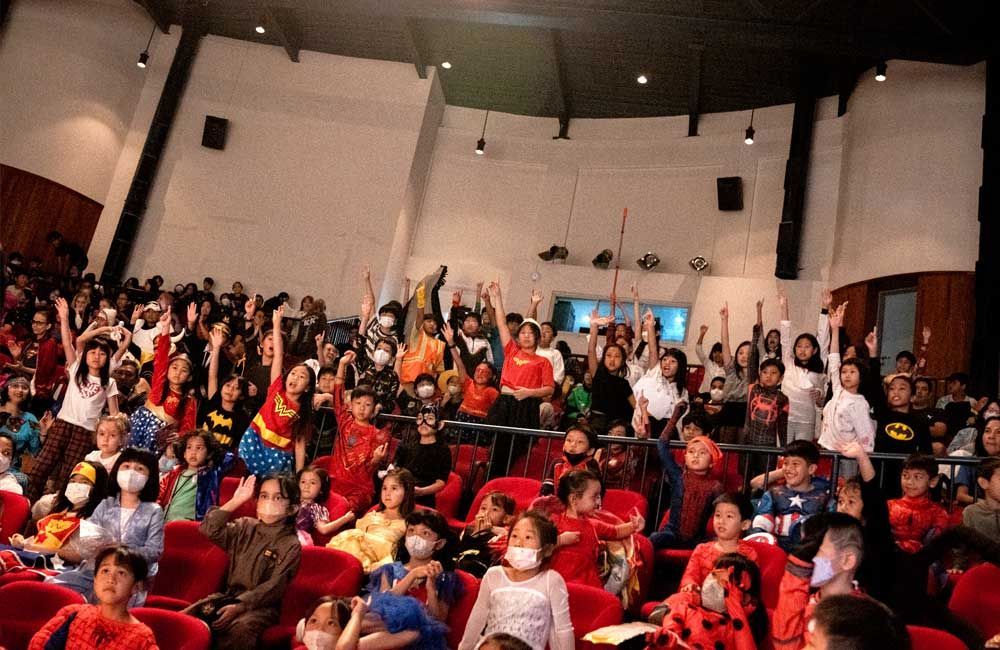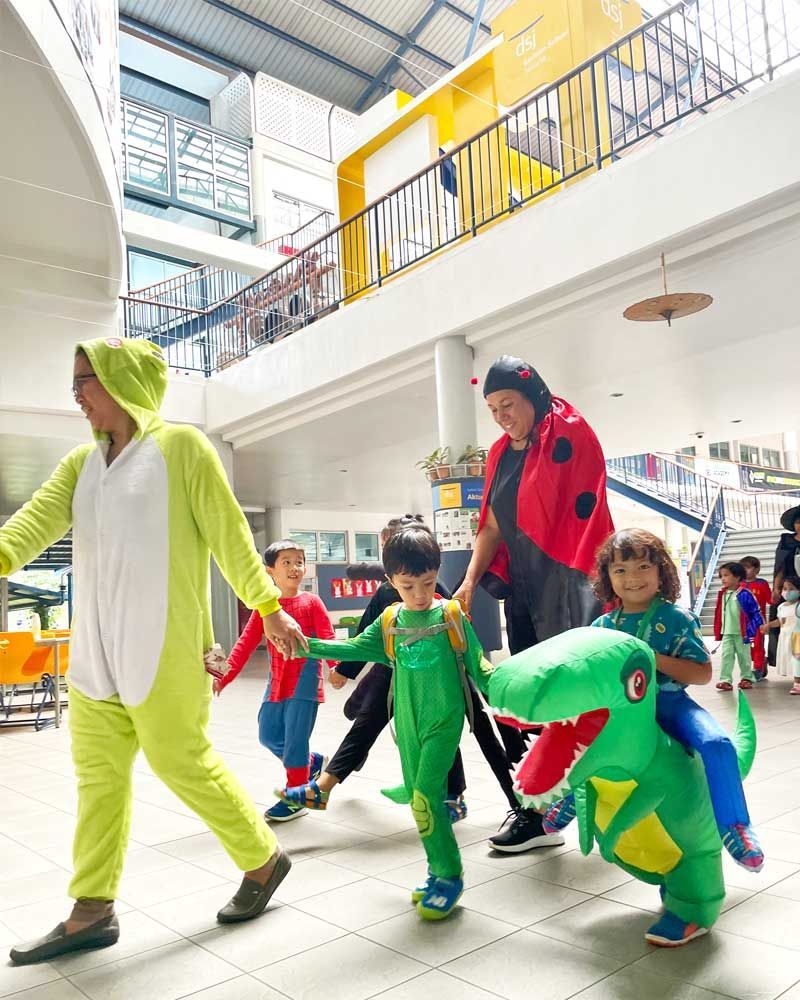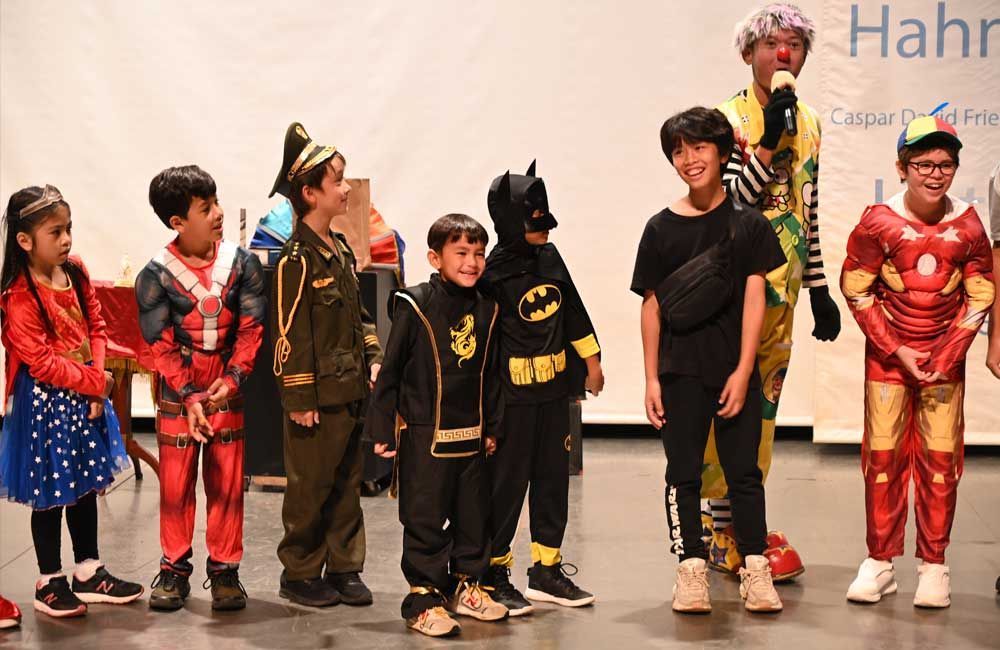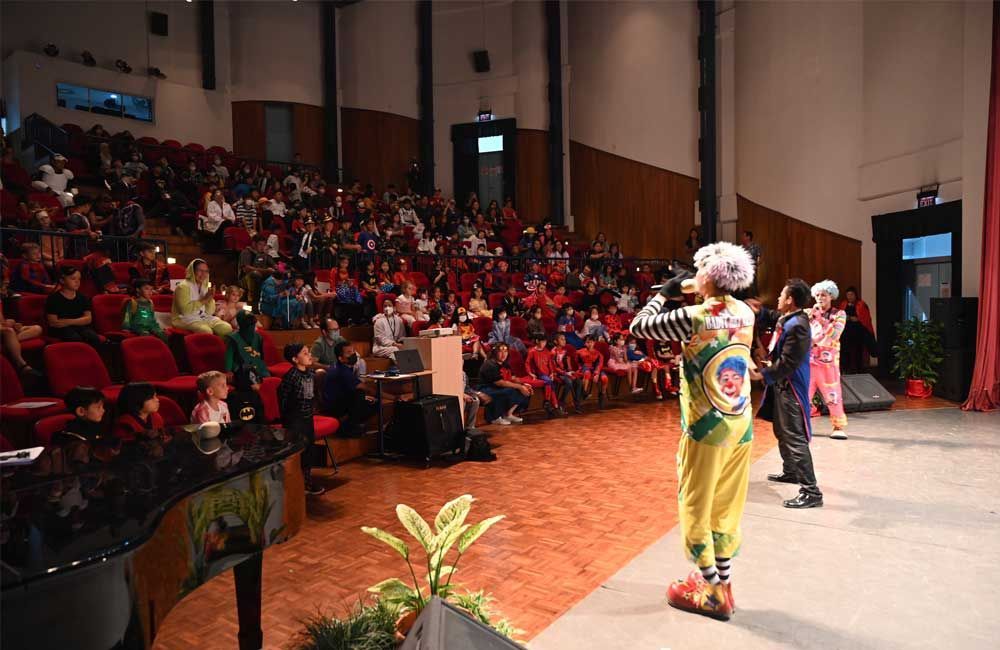Fasching at the German School Jakart: Helau!
Published:
Helau! The German School Jakarta celebrated this year's carnival festival on Friday, February 17th. Our students and teachers came to the school in imaginative costumes — the motto was Heroes —, where this ancient custom was celebrated in the classrooms, the auditorium and eventually in the school hall.

Carnival was originally a pagan folk festival that marked the transition from winter to spring. One theory has it that this was how the end of winter was celebrated and spring welcomed. People celebrated by eating what was left over from the winter to keep the food from spoiling during the Great Fast. The purpose of wearing carnival costumes and masks was to drive away the evil winter spirits.
In East Germany, Bavaria and Austria, the word "Fasching" is used instead of "Carnival". "Fasching" is derived from the word "Fastenschank". This refers to the last serving of alcoholic beverages before Lent (Fasting), which was strictly observed in earlier times. In some regions of southern Germany, the word "Fastnacht" is also used. Since the 11th century, this has been the name given to the eve of the day with which the 40-day fasting period before Easter began for Christians.
As it turns out, the origins of Carnival, Fasching and Fastnacht are close together. The most important thing about this festival today is above all fun and the right costume. And everyone at the DSJ got that right — as our photo gallery proves. After the auditorium, we danced the typical Polonaise through the school grounds and our children enjoyed the sweets that were thrown into the crowd.


























































































































